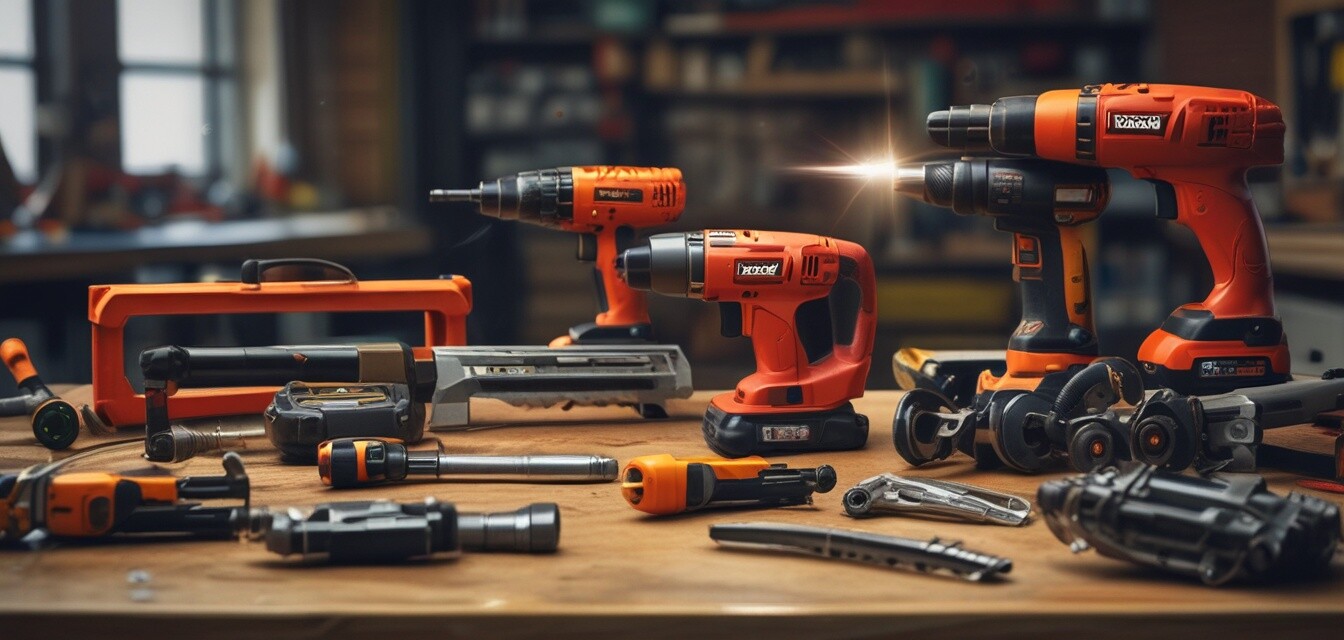
Evolving Safety Features in Power Tools
- Safety features in power tools are increasingly innovative and user-friendly.
- New technologies such as automatic shut-off and overload protection are becoming standard.
- Ergonomics play a critical role in reducing user fatigue and improving safety.
- Awareness of safety features can enhance the effectiveness and enjoyment of using power tools.
- Staying updated with trends in safety features can influence purchasing decisions.
As the demand for portable power tools grows among contractors and DIY enthusiasts, so does the need for enhanced safety features. With advancements in technology, manufacturers are continually finding innovative ways to protect users, making power tools safer than ever before.
The importance of safety in power tools
Power tools are crucial for various projects, but they can also pose significant risks if not handled properly. The injuries resulting from accidents can lead to severe consequences, highlighting the importance of safety in the industry. Evolving safety features help protect users and contribute to a more efficient work environment.
Common safety features in modern power tools
Here’s a list of some common safety features found in today’s power tools:
- Automatic shut-off technology
- Overload protection
- Safety guards
- Electrical insulation
- Ergonomic designs
The role of technology in enhancing safety
Technological advancements have paved the way for numerous innovations in power tool safety. Some key areas include:
| Safety Feature | Description | Benefits |
|---|---|---|
| Automatic shut-off | Tools shut off automatically if they overheat or become too unstable. | Prevents potential accidents due to overheating; prolongs tool life. |
| Overload protection | Prevents tools from exceeding their electrical capacity. | Helps prevent equipment damage and electric shocks. |
| Safety guards | Physical barriers designed to shield users from moving parts. | Reduces the risk of injuries from cuts and spinning blades. |
| Ergonomic designs | Tools are designed to fit comfortably in the user's hand. | Reduces fatigue, improving control and overall safety. |
Innovations shaping the future of power tools
As forward-thinking manufacturers push the envelope on tools' safety, several innovations stand out:
- Smart Sensors: These detect user presence and can disable power if the tool is dropped.
- Blade brakes: Instantly stops blade movement to minimize injury risk.
- Vibration-reducing technology: Damps vibrations to prevent long-term hand injuries.
How to choose safe power tools
Choosing power tools that prioritize safety is crucial. Here are some tips on how to select these tools:
Tips for Choosing Safe Power Tools
- Look for tools with the latest safety features.
- Read customer reviews focusing on user experiences related to safety.
- Check for compliance with safety regulations in your region.
- Consider the ease of handling and ergonomic design.
For more insights into power tools, visit our buying guides section.
Training and awareness are key
Even with the best safety features, the importance of training cannot be overstated. Proper training ensures users understand how to operate their tools safely and effectively. Here are some training tips:
- Attend workshops or classes focused on tool safety.
- Familiarize yourself with the user manual.
- Practice using safety features before beginning projects.
Conclusion
The evolution of safety features in power tools is a response to both user demand and industry standards. Adopting new technology, such as automatic shut-off and ergonomic designs, makes tools safer while enhancing their performance. By staying updated with the latest advancements in safety, users can make informed decisions about which tools to incorporate into their projects.
Stay informed about the best safety features
For more articles on trends and innovations in the portable power tools industry, be sure to explore our news and trends category.
Pros
- Innovative safety technologies reduce risks.
- Ergonomic designs enhance user comfort.
- Automatic shut-off features prevent accidents.
- Proper training promotes effective usage.
Cons
- Advanced safety features may increase costs.
- Users might rely too heavily on safety features.
- Learning curves for new technologies may be steep.
